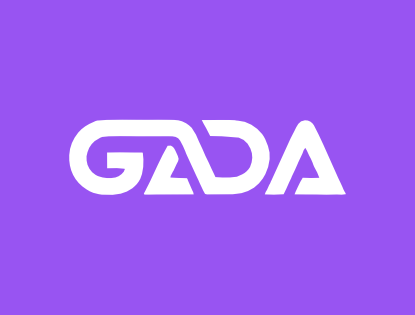*DIABETES*
Diabetes is a chronic metabolic disorder characterized by high blood glucose levels, often leading to damage to the heart, blood vessels, eyes, kidneys, and nerves.
The main types of diabetes include type 1,
type 2, and gestational diabetes.
Types of Diabetes:
*Type 1 Diabetes:*
This type is an autoimmune disease where the body's immune system attacks the insulin-producing cells in the pancreas, resulting in little to no insulin production.
It often develops in childhood or adolescence but can occur at any age.
*Type 2 Diabetes:*
In this type, the body either doesn't produce enough insulin or its cells don't respond properly to insulin (insulin resistance). This leads to a buildup of glucose in the bloodstream.
Type 2 diabetes is the most common type and usually develops in adulthood, but it can also occur in children.
*Gestational Diabetes:*
This type develops during pregnancy and typically resolves after childbirth. However, women who have gestational diabetes have a higher risk of developing type 2 diabetes later in life.
*Prediabetes:*
This is a condition where blood sugar levels are higher than normal but not high enough to be diagnosed as diabetes. Individuals with prediabetes are at higher risk of developing type 2 diabetes.
Treating diabetes involves a multifaceted approach, including lifestyle modifications like diet and exercise, and often requires medication, such as insulin or non-insulin antihyperglycemic agents. The specific formulation used depends on the type of diabetes and individual patient needs.
Types of Diabetes and Treatment Approaches:
Type 1 Diabetes:
Primarily requires insulin therapy due to the body's inability to produce insulin. Insulin is administered through injections or an insulin pump, mimicking the natural function of the pancreas.
Type 2 Diabetes:
Often managed initially with diet and exercise, but may require medication as well. Medications can include oral antidiabetic drugs (e.g., sulfonylureas, metformin, GLP-1 receptor agonists) or insulin therapy.
Gestational Diabetes:
Usually managed with diet, exercise, and potentially insulin, especially if blood sugar levels are not controlled.
Formulation Methods:
Diet and Exercise:
These play a crucial role in managing blood sugar levels, improving insulin sensitivity, and promoting overall health.
Insulin Therapy:
Involves administering insulin to lower blood sugar levels. Different types of insulin are available, including short-acting, rapid-acting, and long-acting options, and are chosen based on individual needs.
Non-Insulin Antihyperglycemic Medications:
These drugs work in different ways to lower blood sugar levels, such as by increasing insulin production, improving insulin sensitivity, or slowing down glucose absorption.
Other Treatments:
May include therapies like islet cell transplantation (a more advanced treatment that restores insulin-producing cells) or insulin pumps (devices that deliver insulin continuously, mimicking the body's natural function).
Example of a Formulation (Combination Therapy):
A common approach for type 2 diabetes is a combination of oral antidiabetic medications (like metformin) and insulin, used when oral medications alone are not sufficient to control blood sugar.
Some formulations may also include other treatments like GLP-1 receptor agonists, which can help improve blood sugar control and may also lead to weight loss.
Important Considerations:
Individualized Treatment:
The specific formulation used should be tailored to each patient's individual needs, taking into account factors like their age, other health conditions, and medication preferences.
Monitoring and Adjustments:
Regular blood sugar monitoring and follow-up appointments are essential to ensure the formulation is working effectively and to make necessary adjustments.
Education and Support:
Patient education is crucial to ensure proper medication use and understanding of the diabetes management plan.
Diabetes treatment formulation involves a comprehensive.
1. *Dietary changes*: Balanced meal planning, carbohydrate counting.
2. *Physical activity*: Regular exercise, such as walking, jogging..
3. *Weight management*: Maintaining a healthy weight.
Monitoring and Adjustments
1. *Blood glucose monitoring*: Regular tracking of blood sugar levels.
2. *A1C testing*: Monitoring long-term glucose control.
3. *Medication adjustments*: Healthcare provider-guided changes.
Education and Support
1. *Diabetes education*: Understanding the condition, treatment and self-management.
Over time, diabetes can damage blood vessels in the heart, eyes, kidneys and nerves. People with diabetes have a higher risk of health problems including heart attack, stroke and kidney failure. Diabetes can cause permanent vision loss by damaging blood vessels in the eyes.
*DIET PLAN ON DIABETES PATIENT*
*A diabetic diet focuses on managing blood sugar levels through a balanced intake of carbohydrates, protein, and healthy fats, while also prioritizing whole, unprocessed foods and limiting added sugars and refined grains.*
*Principles of a diabetic diet:*
Carbohydrates: Choose complex carbohydrates like whole grains, fruits, vegetables, and legumes.
*These are digested more slowly, preventing rapid spikes in blood sugar.*
*Protein:* Include lean protein sources such as fish, chicken, turkey, eggs, beans, and lentils.
*Healthy Fats:* Opt for healthy fats like olive oil, avocados, nuts, and seeds.
*Fiber:* Increase fiber intake through whole grains, vegetables, and fruits to help regulate blood sugar.
*Portion Control:* Be mindful of portion sizes to avoid overconsumption of carbohydrates and calories.
*Limit Added Sugars:* Reduce intake of sugary drinks, desserts, and processed foods.
*Regular Meal Times:* Eat meals at regular intervals to maintain stable blood sugar levels.
*Foods to include:*
Non-starchy vegetables: Spinach, leafy greens, carrots, bell peppers.
*Whole grains:* Whole wheat bread, brown rice, quinoa, oats.
*Fruits:* Choose whole fruits over juices or dried fruit.
*Lean protein:* Fish, chicken, turkey, eggs, beans, lentils.
Low-fat dairy: Milk, yogurt, cheese.
*Healthy fats:* Olive oil, avocados, nuts, seeds.
Foods to limit or avoid:
Sugary drinks: Soda, juice, sports drinks.
Refined grains: White bread, white rice, pasta.
Processed foods: Fast food, chips, sugary snacks.
Saturated and trans fats: Found in processed meats, butter, and fried foods.
Example meal plan:
*Breakfast:* Oatmeal with berries and nuts, or a lean protein omelet with vegetables.
*Lunch:* Salad with grilled chicken or fish, whole-grain bread, and vegetables.
*Dinner:* Baked chicken or fish with roasted vegetables and brown rice.
Snacks: Fruits, vegetables, nuts, or a piece of whole-grain bread with a small amount of low-fat cheese.
*Additional Tips:*
Read food labels: Pay attention to sugar and carbohydrate content.
Consult with a registered dietitian: A dietitian can help create a personalized meal plan.
*Stay hydrated:* Drink plenty of water throughout the day.
*Be active:* Regular physical activity helps improve insulin sensitivity and blood sugar control.
*Manage stress:* High stress levels can impact blood sugar.
*Don't skip meals:* Regular meals help prevent blood sugar swings.
*Monitor your blood sugar:* Regularly check your blood sugar levels to track your progress and make adjustments to your diet.
*Consider cultural preferences:* Incorporate healthy versions of traditional Nigerian dishes into your meal plan.
Use the plate method: Fill half of your plate with non-starchy vegetables, a quarter with lean protein, and a quarter with a carbohydrate.
*POTENTIAL WARNING SIGNS OF DIABETES* include increased thirst, frequent urination, unexplained weight loss, excessive hunger, fatigue, blurred vision, slow-healing wounds, numbness or tingling in hands/feet, frequent skin or vaginal yeast infections, and dark skin patches.
More detailed look at each of these signs:
1. Increased Thirst and Frequent Urination:
Excessive thirst (polydipsia) and frequent urination (polyuria) are common early symptoms, especially in type 1 diabetes.
2. Unexplained Weight Loss:
Despite increased appetite, unexplained weight loss can be a sign of type 1 diabetes, as the body is unable to utilize glucose for energy.
3. Excessive Hunger:
Increased appetite (polyphagia) can occur as the body tries to compensate for the inability to use glucose.
4. Fatigue:
Persistent tiredness and weakness can be a result of high blood sugar levels and dehydration from frequent urination.
5. Blurred Vision:
High blood sugar can affect the lens and cause changes in fluid levels in the eye, leading to temporary blurring.
6. Slow-Healing Wounds:
Diabetes can impair blood circulation, slowing down the healing process of cuts and sores.
7. Numbness or Tingling in Hands/Feet:
Nerve damage (neuropathy) from high blood sugar can cause tingling or numbness, particularly in the extremities.
8. Frequent Skin or Vaginal Yeast Infections:
High blood sugar can create an environment for yeast to thrive.
9. Dark Skin Patches:
Acanthosis nigricans, characterized by dark, velvety patches in skin folds (like armpits, neck, groin), can be a sign of type 2 diabetes.
10. Shin Spots (Diabetic Dermopathy):
These round, brown or reddish-brown spots, often on the shins, can be a sign of diabetes and may fade after diabetes is well-controlled.
*Several herbs medicine for management blood sugar levels, including cinnamon, fenugreek, bitter melon, it's very important to check the patient sugar levels before incorporating them into your routine, especially if you have diabetes.*
Herbs and Supplements for Blood Sugar Control:
*Cinnamon:* Studies suggest cinnamon can help lower glucose levels and improve insulin sensitivity.
*Fenugreek:* This herb is known to improve glucose tolerance and reduce blood sugar levels.
*Bitter Melon:* This plant has been traditionally used to manage diabetes and may help with blood sugar control.
*Milk Thistle:* Some research indicates milk thistle may help lower blood sugar and protect against diabetes-related complications.
*Gymnema:* This herb is believed to help regulate blood sugar levels and suppress cravings for sweets.
*Ginger:* Ginger has anti-diabetic, anti-oxidative, and hypolipidemic properties that may help manage blood sugar.
*Aloe Vera:* Aloe vera may help improve insulin sensitivity and lower blood sugar levels.
Berberine: This supplement is known to help control blood sugar and lipid metabolism.
*Turmeric:* Turmeric is a spice with anti-inflammatory and anti-diabetic properties that may help regulate blood sugar.
*Holy Basil:* This herb is believed to improve glucose tolerance and regulate blood sugar levels.
*Oregano:* Oregano oil may help lower blood sugar and reduce oxidation of lipoprotein in the blood.
*Aegle marmelos (Bilva):* A study showed that the aqueous extract of Bilva leaves can improve digestion, reduce blood sugar, and lower cholesterol levels.
*Nopal Cactus:* Nopal cactus may help control high blood sugar and cholesterol levels when incorporated into the diet.
*Curry Leaves:* Curry leaves may improve insulin sensitivity and help lower blood sugar.
*Apple Cider Vinegar:* The acetic acid in apple cider vinegar may help lower blood sugar levels.
Ginseng: Ginseng may help improve insulin sensitivity and regulate blood sugar levels.
*Probiotics:* Some research suggests probiotics may help improve blood sugar control and insulin sensitivity.
*Berberine*: Lowers blood sugar, improves insulin sensitivity.
*Ginseng*: May improve insulin sensitivity, glucose metabolism.
Methods
1. *Tea infusions*: Herbal teas, such as gymnema or fenugreek.
2. *Capsules or tablets*: Standardized extracts of herbs like berberine.
3. *Powders or extracts*: Added to food or drink Considerations
Ensure safe integration with conventional treatment.
. *Quality control*: Choose reputable sources.
. *Monitoring*: Regularly track blood sugar levels.
Potential Benefits
1. *Blood sugar control*: Some herbs may help lower blood sugar.
2. *Insulin sensitivity*: Certain herbs may improve insulin function.
3. *Antioxidant properties*: Some herbs may reduce oxidative stress.
As a complementary and alternative medicine practitioner, I'd describe various ways to formulate and use herbal treatments for diabetes management:
Herbal Formulations.
1. *Teas*: Infusions or decoctions of herbs like Gymnema Sylvestre, Fenugreek, or Cinnamon.
2. *Capsules/Tablets*: Standardized extracts of herbs like Berberine, Ginseng, or Turmeric.
3. *Powders/Extracts*: Added to food or drinks, such as Gymnema or Fenugreek powder.
4. *Tinctures*: Concentrated herbal extracts, often used sublingually.
Methods
1. *Combination therapy*: Blending multiple herbs for synergistic effects.
2. *Individualized treatment*: Tailoring herbal remedies to each patient's needs.
3. *Lifestyle integration*: Combining herbal treatments with dietary changes and exercise.
Popular Herbs
1. *Berberine*: Blood sugar regulation, insulin sensitivity.
2. *Gymnema Sylvestre*: Traditionally used to support blood sugar control.
3. *Fenugreek*: May improve glucose tolerance, insulin sensitivity.
4. *Cinnamon*: Potential blood sugar-lowering properties.
Considerations
1. *Quality control*: Sourcing high-quality herbs.
2. *Dosage and potency*: Ensuring effective and safe dosing.
3. *Interactions and contraindications*: Monitoring potential interactions with conventional medications.
*Treatment plan for the management of diabetes*
King of bitter, abere seed,bitter leaf and bitter kola
From personal experience, both King of Bitters and Abere Seed live up to their reputations but in different ways.
*King of Bitters* has a sharp, intense bitterness that fully activates all the bitter-sensitive areas of the tongue. It hits hard the moment it touches your tongue but fades relatively quickly. The initial impact is strong, but it doesn’t linger for too long.
*Abere Seed*, on the other hand, offers a more complex bitterness. It not only stimulates the bitter taste buds but seems to engage the sour-sensitive areas as well.
The bitterness hits hard—just like King of Bitters—but unlike it, the taste lingers stubbornly. It stays on your tongue, often making you want to scrape it off. That lingering bitterness is what sets it apart.
*Bitter Leaf* falls somewhere in between. Its bitterness is noticeable and persistent but not as sharp as King of Bitters nor as lingering as Abere Seed. In my experience, *Bitter Kola* shares a similar bitterness level with Bitter Leaf—distinct but not overwhelming.
Now, imagine combining these four potent botanicals—King of Bitters, Abere Seed, Bitter Leaf, and Bitter Kola—into one powerful herbal formulation:
*Know as Bitters Capsule*.
This herbal blend could be nature’s answer to some of the most stubborn ailments. From supporting *liver health* to reversing *diabetics status, fighting hepatitis*, and even showing promise in the *treatment of cancer*—bitter plants hold remarkable healing potential.
Yes, Nature truly put healing essence in bitter herbs.
You can also use
Nri product
D3 orignic
De-defix
Cuminus oil
Green tea
Majik tea
Call 080 33586139
Diabetes is a chronic metabolic disorder characterized by high blood glucose levels, often leading to damage to the heart, blood vessels, eyes, kidneys, and nerves.
The main types of diabetes include type 1,
type 2, and gestational diabetes.
Types of Diabetes:
*Type 1 Diabetes:*
This type is an autoimmune disease where the body's immune system attacks the insulin-producing cells in the pancreas, resulting in little to no insulin production.
It often develops in childhood or adolescence but can occur at any age.
*Type 2 Diabetes:*
In this type, the body either doesn't produce enough insulin or its cells don't respond properly to insulin (insulin resistance). This leads to a buildup of glucose in the bloodstream.
Type 2 diabetes is the most common type and usually develops in adulthood, but it can also occur in children.
*Gestational Diabetes:*
This type develops during pregnancy and typically resolves after childbirth. However, women who have gestational diabetes have a higher risk of developing type 2 diabetes later in life.
*Prediabetes:*
This is a condition where blood sugar levels are higher than normal but not high enough to be diagnosed as diabetes. Individuals with prediabetes are at higher risk of developing type 2 diabetes.
Treating diabetes involves a multifaceted approach, including lifestyle modifications like diet and exercise, and often requires medication, such as insulin or non-insulin antihyperglycemic agents. The specific formulation used depends on the type of diabetes and individual patient needs.
Types of Diabetes and Treatment Approaches:
Type 1 Diabetes:
Primarily requires insulin therapy due to the body's inability to produce insulin. Insulin is administered through injections or an insulin pump, mimicking the natural function of the pancreas.
Type 2 Diabetes:
Often managed initially with diet and exercise, but may require medication as well. Medications can include oral antidiabetic drugs (e.g., sulfonylureas, metformin, GLP-1 receptor agonists) or insulin therapy.
Gestational Diabetes:
Usually managed with diet, exercise, and potentially insulin, especially if blood sugar levels are not controlled.
Formulation Methods:
Diet and Exercise:
These play a crucial role in managing blood sugar levels, improving insulin sensitivity, and promoting overall health.
Insulin Therapy:
Involves administering insulin to lower blood sugar levels. Different types of insulin are available, including short-acting, rapid-acting, and long-acting options, and are chosen based on individual needs.
Non-Insulin Antihyperglycemic Medications:
These drugs work in different ways to lower blood sugar levels, such as by increasing insulin production, improving insulin sensitivity, or slowing down glucose absorption.
Other Treatments:
May include therapies like islet cell transplantation (a more advanced treatment that restores insulin-producing cells) or insulin pumps (devices that deliver insulin continuously, mimicking the body's natural function).
Example of a Formulation (Combination Therapy):
A common approach for type 2 diabetes is a combination of oral antidiabetic medications (like metformin) and insulin, used when oral medications alone are not sufficient to control blood sugar.
Some formulations may also include other treatments like GLP-1 receptor agonists, which can help improve blood sugar control and may also lead to weight loss.
Important Considerations:
Individualized Treatment:
The specific formulation used should be tailored to each patient's individual needs, taking into account factors like their age, other health conditions, and medication preferences.
Monitoring and Adjustments:
Regular blood sugar monitoring and follow-up appointments are essential to ensure the formulation is working effectively and to make necessary adjustments.
Education and Support:
Patient education is crucial to ensure proper medication use and understanding of the diabetes management plan.
Diabetes treatment formulation involves a comprehensive.
1. *Dietary changes*: Balanced meal planning, carbohydrate counting.
2. *Physical activity*: Regular exercise, such as walking, jogging..
3. *Weight management*: Maintaining a healthy weight.
Monitoring and Adjustments
1. *Blood glucose monitoring*: Regular tracking of blood sugar levels.
2. *A1C testing*: Monitoring long-term glucose control.
3. *Medication adjustments*: Healthcare provider-guided changes.
Education and Support
1. *Diabetes education*: Understanding the condition, treatment and self-management.
Over time, diabetes can damage blood vessels in the heart, eyes, kidneys and nerves. People with diabetes have a higher risk of health problems including heart attack, stroke and kidney failure. Diabetes can cause permanent vision loss by damaging blood vessels in the eyes.
*DIET PLAN ON DIABETES PATIENT*
*A diabetic diet focuses on managing blood sugar levels through a balanced intake of carbohydrates, protein, and healthy fats, while also prioritizing whole, unprocessed foods and limiting added sugars and refined grains.*
*Principles of a diabetic diet:*
Carbohydrates: Choose complex carbohydrates like whole grains, fruits, vegetables, and legumes.
*These are digested more slowly, preventing rapid spikes in blood sugar.*
*Protein:* Include lean protein sources such as fish, chicken, turkey, eggs, beans, and lentils.
*Healthy Fats:* Opt for healthy fats like olive oil, avocados, nuts, and seeds.
*Fiber:* Increase fiber intake through whole grains, vegetables, and fruits to help regulate blood sugar.
*Portion Control:* Be mindful of portion sizes to avoid overconsumption of carbohydrates and calories.
*Limit Added Sugars:* Reduce intake of sugary drinks, desserts, and processed foods.
*Regular Meal Times:* Eat meals at regular intervals to maintain stable blood sugar levels.
*Foods to include:*
Non-starchy vegetables: Spinach, leafy greens, carrots, bell peppers.
*Whole grains:* Whole wheat bread, brown rice, quinoa, oats.
*Fruits:* Choose whole fruits over juices or dried fruit.
*Lean protein:* Fish, chicken, turkey, eggs, beans, lentils.
Low-fat dairy: Milk, yogurt, cheese.
*Healthy fats:* Olive oil, avocados, nuts, seeds.
Foods to limit or avoid:
Sugary drinks: Soda, juice, sports drinks.
Refined grains: White bread, white rice, pasta.
Processed foods: Fast food, chips, sugary snacks.
Saturated and trans fats: Found in processed meats, butter, and fried foods.
Example meal plan:
*Breakfast:* Oatmeal with berries and nuts, or a lean protein omelet with vegetables.
*Lunch:* Salad with grilled chicken or fish, whole-grain bread, and vegetables.
*Dinner:* Baked chicken or fish with roasted vegetables and brown rice.
Snacks: Fruits, vegetables, nuts, or a piece of whole-grain bread with a small amount of low-fat cheese.
*Additional Tips:*
Read food labels: Pay attention to sugar and carbohydrate content.
Consult with a registered dietitian: A dietitian can help create a personalized meal plan.
*Stay hydrated:* Drink plenty of water throughout the day.
*Be active:* Regular physical activity helps improve insulin sensitivity and blood sugar control.
*Manage stress:* High stress levels can impact blood sugar.
*Don't skip meals:* Regular meals help prevent blood sugar swings.
*Monitor your blood sugar:* Regularly check your blood sugar levels to track your progress and make adjustments to your diet.
*Consider cultural preferences:* Incorporate healthy versions of traditional Nigerian dishes into your meal plan.
Use the plate method: Fill half of your plate with non-starchy vegetables, a quarter with lean protein, and a quarter with a carbohydrate.
*POTENTIAL WARNING SIGNS OF DIABETES* include increased thirst, frequent urination, unexplained weight loss, excessive hunger, fatigue, blurred vision, slow-healing wounds, numbness or tingling in hands/feet, frequent skin or vaginal yeast infections, and dark skin patches.
More detailed look at each of these signs:
1. Increased Thirst and Frequent Urination:
Excessive thirst (polydipsia) and frequent urination (polyuria) are common early symptoms, especially in type 1 diabetes.
2. Unexplained Weight Loss:
Despite increased appetite, unexplained weight loss can be a sign of type 1 diabetes, as the body is unable to utilize glucose for energy.
3. Excessive Hunger:
Increased appetite (polyphagia) can occur as the body tries to compensate for the inability to use glucose.
4. Fatigue:
Persistent tiredness and weakness can be a result of high blood sugar levels and dehydration from frequent urination.
5. Blurred Vision:
High blood sugar can affect the lens and cause changes in fluid levels in the eye, leading to temporary blurring.
6. Slow-Healing Wounds:
Diabetes can impair blood circulation, slowing down the healing process of cuts and sores.
7. Numbness or Tingling in Hands/Feet:
Nerve damage (neuropathy) from high blood sugar can cause tingling or numbness, particularly in the extremities.
8. Frequent Skin or Vaginal Yeast Infections:
High blood sugar can create an environment for yeast to thrive.
9. Dark Skin Patches:
Acanthosis nigricans, characterized by dark, velvety patches in skin folds (like armpits, neck, groin), can be a sign of type 2 diabetes.
10. Shin Spots (Diabetic Dermopathy):
These round, brown or reddish-brown spots, often on the shins, can be a sign of diabetes and may fade after diabetes is well-controlled.
*Several herbs medicine for management blood sugar levels, including cinnamon, fenugreek, bitter melon, it's very important to check the patient sugar levels before incorporating them into your routine, especially if you have diabetes.*
Herbs and Supplements for Blood Sugar Control:
*Cinnamon:* Studies suggest cinnamon can help lower glucose levels and improve insulin sensitivity.
*Fenugreek:* This herb is known to improve glucose tolerance and reduce blood sugar levels.
*Bitter Melon:* This plant has been traditionally used to manage diabetes and may help with blood sugar control.
*Milk Thistle:* Some research indicates milk thistle may help lower blood sugar and protect against diabetes-related complications.
*Gymnema:* This herb is believed to help regulate blood sugar levels and suppress cravings for sweets.
*Ginger:* Ginger has anti-diabetic, anti-oxidative, and hypolipidemic properties that may help manage blood sugar.
*Aloe Vera:* Aloe vera may help improve insulin sensitivity and lower blood sugar levels.
Berberine: This supplement is known to help control blood sugar and lipid metabolism.
*Turmeric:* Turmeric is a spice with anti-inflammatory and anti-diabetic properties that may help regulate blood sugar.
*Holy Basil:* This herb is believed to improve glucose tolerance and regulate blood sugar levels.
*Oregano:* Oregano oil may help lower blood sugar and reduce oxidation of lipoprotein in the blood.
*Aegle marmelos (Bilva):* A study showed that the aqueous extract of Bilva leaves can improve digestion, reduce blood sugar, and lower cholesterol levels.
*Nopal Cactus:* Nopal cactus may help control high blood sugar and cholesterol levels when incorporated into the diet.
*Curry Leaves:* Curry leaves may improve insulin sensitivity and help lower blood sugar.
*Apple Cider Vinegar:* The acetic acid in apple cider vinegar may help lower blood sugar levels.
Ginseng: Ginseng may help improve insulin sensitivity and regulate blood sugar levels.
*Probiotics:* Some research suggests probiotics may help improve blood sugar control and insulin sensitivity.
*Berberine*: Lowers blood sugar, improves insulin sensitivity.
*Ginseng*: May improve insulin sensitivity, glucose metabolism.
Methods
1. *Tea infusions*: Herbal teas, such as gymnema or fenugreek.
2. *Capsules or tablets*: Standardized extracts of herbs like berberine.
3. *Powders or extracts*: Added to food or drink Considerations
Ensure safe integration with conventional treatment.
. *Quality control*: Choose reputable sources.
. *Monitoring*: Regularly track blood sugar levels.
Potential Benefits
1. *Blood sugar control*: Some herbs may help lower blood sugar.
2. *Insulin sensitivity*: Certain herbs may improve insulin function.
3. *Antioxidant properties*: Some herbs may reduce oxidative stress.
As a complementary and alternative medicine practitioner, I'd describe various ways to formulate and use herbal treatments for diabetes management:
Herbal Formulations.
1. *Teas*: Infusions or decoctions of herbs like Gymnema Sylvestre, Fenugreek, or Cinnamon.
2. *Capsules/Tablets*: Standardized extracts of herbs like Berberine, Ginseng, or Turmeric.
3. *Powders/Extracts*: Added to food or drinks, such as Gymnema or Fenugreek powder.
4. *Tinctures*: Concentrated herbal extracts, often used sublingually.
Methods
1. *Combination therapy*: Blending multiple herbs for synergistic effects.
2. *Individualized treatment*: Tailoring herbal remedies to each patient's needs.
3. *Lifestyle integration*: Combining herbal treatments with dietary changes and exercise.
Popular Herbs
1. *Berberine*: Blood sugar regulation, insulin sensitivity.
2. *Gymnema Sylvestre*: Traditionally used to support blood sugar control.
3. *Fenugreek*: May improve glucose tolerance, insulin sensitivity.
4. *Cinnamon*: Potential blood sugar-lowering properties.
Considerations
1. *Quality control*: Sourcing high-quality herbs.
2. *Dosage and potency*: Ensuring effective and safe dosing.
3. *Interactions and contraindications*: Monitoring potential interactions with conventional medications.
*Treatment plan for the management of diabetes*
King of bitter, abere seed,bitter leaf and bitter kola
From personal experience, both King of Bitters and Abere Seed live up to their reputations but in different ways.
*King of Bitters* has a sharp, intense bitterness that fully activates all the bitter-sensitive areas of the tongue. It hits hard the moment it touches your tongue but fades relatively quickly. The initial impact is strong, but it doesn’t linger for too long.
*Abere Seed*, on the other hand, offers a more complex bitterness. It not only stimulates the bitter taste buds but seems to engage the sour-sensitive areas as well.
The bitterness hits hard—just like King of Bitters—but unlike it, the taste lingers stubbornly. It stays on your tongue, often making you want to scrape it off. That lingering bitterness is what sets it apart.
*Bitter Leaf* falls somewhere in between. Its bitterness is noticeable and persistent but not as sharp as King of Bitters nor as lingering as Abere Seed. In my experience, *Bitter Kola* shares a similar bitterness level with Bitter Leaf—distinct but not overwhelming.
Now, imagine combining these four potent botanicals—King of Bitters, Abere Seed, Bitter Leaf, and Bitter Kola—into one powerful herbal formulation:
*Know as Bitters Capsule*.
This herbal blend could be nature’s answer to some of the most stubborn ailments. From supporting *liver health* to reversing *diabetics status, fighting hepatitis*, and even showing promise in the *treatment of cancer*—bitter plants hold remarkable healing potential.
Yes, Nature truly put healing essence in bitter herbs.
You can also use
Nri product
D3 orignic
De-defix
Cuminus oil
Green tea
Majik tea
Call 080 33586139
*DIABETES*
Diabetes is a chronic metabolic disorder characterized by high blood glucose levels, often leading to damage to the heart, blood vessels, eyes, kidneys, and nerves.
The main types of diabetes include type 1,
type 2, and gestational diabetes.
Types of Diabetes:
*Type 1 Diabetes:*
This type is an autoimmune disease where the body's immune system attacks the insulin-producing cells in the pancreas, resulting in little to no insulin production.
It often develops in childhood or adolescence but can occur at any age.
*Type 2 Diabetes:*
In this type, the body either doesn't produce enough insulin or its cells don't respond properly to insulin (insulin resistance). This leads to a buildup of glucose in the bloodstream.
Type 2 diabetes is the most common type and usually develops in adulthood, but it can also occur in children.
*Gestational Diabetes:*
This type develops during pregnancy and typically resolves after childbirth. However, women who have gestational diabetes have a higher risk of developing type 2 diabetes later in life.
*Prediabetes:*
This is a condition where blood sugar levels are higher than normal but not high enough to be diagnosed as diabetes. Individuals with prediabetes are at higher risk of developing type 2 diabetes.
Treating diabetes involves a multifaceted approach, including lifestyle modifications like diet and exercise, and often requires medication, such as insulin or non-insulin antihyperglycemic agents. The specific formulation used depends on the type of diabetes and individual patient needs.
Types of Diabetes and Treatment Approaches:
Type 1 Diabetes:
Primarily requires insulin therapy due to the body's inability to produce insulin. Insulin is administered through injections or an insulin pump, mimicking the natural function of the pancreas.
Type 2 Diabetes:
Often managed initially with diet and exercise, but may require medication as well. Medications can include oral antidiabetic drugs (e.g., sulfonylureas, metformin, GLP-1 receptor agonists) or insulin therapy.
Gestational Diabetes:
Usually managed with diet, exercise, and potentially insulin, especially if blood sugar levels are not controlled.
Formulation Methods:
Diet and Exercise:
These play a crucial role in managing blood sugar levels, improving insulin sensitivity, and promoting overall health.
Insulin Therapy:
Involves administering insulin to lower blood sugar levels. Different types of insulin are available, including short-acting, rapid-acting, and long-acting options, and are chosen based on individual needs.
Non-Insulin Antihyperglycemic Medications:
These drugs work in different ways to lower blood sugar levels, such as by increasing insulin production, improving insulin sensitivity, or slowing down glucose absorption.
Other Treatments:
May include therapies like islet cell transplantation (a more advanced treatment that restores insulin-producing cells) or insulin pumps (devices that deliver insulin continuously, mimicking the body's natural function).
Example of a Formulation (Combination Therapy):
A common approach for type 2 diabetes is a combination of oral antidiabetic medications (like metformin) and insulin, used when oral medications alone are not sufficient to control blood sugar.
Some formulations may also include other treatments like GLP-1 receptor agonists, which can help improve blood sugar control and may also lead to weight loss.
Important Considerations:
Individualized Treatment:
The specific formulation used should be tailored to each patient's individual needs, taking into account factors like their age, other health conditions, and medication preferences.
Monitoring and Adjustments:
Regular blood sugar monitoring and follow-up appointments are essential to ensure the formulation is working effectively and to make necessary adjustments.
Education and Support:
Patient education is crucial to ensure proper medication use and understanding of the diabetes management plan.
Diabetes treatment formulation involves a comprehensive.
1. *Dietary changes*: Balanced meal planning, carbohydrate counting.
2. *Physical activity*: Regular exercise, such as walking, jogging..
3. *Weight management*: Maintaining a healthy weight.
Monitoring and Adjustments
1. *Blood glucose monitoring*: Regular tracking of blood sugar levels.
2. *A1C testing*: Monitoring long-term glucose control.
3. *Medication adjustments*: Healthcare provider-guided changes.
Education and Support
1. *Diabetes education*: Understanding the condition, treatment and self-management.
Over time, diabetes can damage blood vessels in the heart, eyes, kidneys and nerves. People with diabetes have a higher risk of health problems including heart attack, stroke and kidney failure. Diabetes can cause permanent vision loss by damaging blood vessels in the eyes.
*DIET PLAN ON DIABETES PATIENT*
*A diabetic diet focuses on managing blood sugar levels through a balanced intake of carbohydrates, protein, and healthy fats, while also prioritizing whole, unprocessed foods and limiting added sugars and refined grains.*
*Principles of a diabetic diet:*
Carbohydrates: Choose complex carbohydrates like whole grains, fruits, vegetables, and legumes.
*These are digested more slowly, preventing rapid spikes in blood sugar.*
*Protein:* Include lean protein sources such as fish, chicken, turkey, eggs, beans, and lentils.
*Healthy Fats:* Opt for healthy fats like olive oil, avocados, nuts, and seeds.
*Fiber:* Increase fiber intake through whole grains, vegetables, and fruits to help regulate blood sugar.
*Portion Control:* Be mindful of portion sizes to avoid overconsumption of carbohydrates and calories.
*Limit Added Sugars:* Reduce intake of sugary drinks, desserts, and processed foods.
*Regular Meal Times:* Eat meals at regular intervals to maintain stable blood sugar levels.
*Foods to include:*
Non-starchy vegetables: Spinach, leafy greens, carrots, bell peppers.
*Whole grains:* Whole wheat bread, brown rice, quinoa, oats.
*Fruits:* Choose whole fruits over juices or dried fruit.
*Lean protein:* Fish, chicken, turkey, eggs, beans, lentils.
Low-fat dairy: Milk, yogurt, cheese.
*Healthy fats:* Olive oil, avocados, nuts, seeds.
Foods to limit or avoid:
Sugary drinks: Soda, juice, sports drinks.
Refined grains: White bread, white rice, pasta.
Processed foods: Fast food, chips, sugary snacks.
Saturated and trans fats: Found in processed meats, butter, and fried foods.
Example meal plan:
*Breakfast:* Oatmeal with berries and nuts, or a lean protein omelet with vegetables.
*Lunch:* Salad with grilled chicken or fish, whole-grain bread, and vegetables.
*Dinner:* Baked chicken or fish with roasted vegetables and brown rice.
Snacks: Fruits, vegetables, nuts, or a piece of whole-grain bread with a small amount of low-fat cheese.
*Additional Tips:*
Read food labels: Pay attention to sugar and carbohydrate content.
Consult with a registered dietitian: A dietitian can help create a personalized meal plan.
*Stay hydrated:* Drink plenty of water throughout the day.
*Be active:* Regular physical activity helps improve insulin sensitivity and blood sugar control.
*Manage stress:* High stress levels can impact blood sugar.
*Don't skip meals:* Regular meals help prevent blood sugar swings.
*Monitor your blood sugar:* Regularly check your blood sugar levels to track your progress and make adjustments to your diet.
*Consider cultural preferences:* Incorporate healthy versions of traditional Nigerian dishes into your meal plan.
Use the plate method: Fill half of your plate with non-starchy vegetables, a quarter with lean protein, and a quarter with a carbohydrate.
*POTENTIAL WARNING SIGNS OF DIABETES* include increased thirst, frequent urination, unexplained weight loss, excessive hunger, fatigue, blurred vision, slow-healing wounds, numbness or tingling in hands/feet, frequent skin or vaginal yeast infections, and dark skin patches.
More detailed look at each of these signs:
1. Increased Thirst and Frequent Urination:
Excessive thirst (polydipsia) and frequent urination (polyuria) are common early symptoms, especially in type 1 diabetes.
2. Unexplained Weight Loss:
Despite increased appetite, unexplained weight loss can be a sign of type 1 diabetes, as the body is unable to utilize glucose for energy.
3. Excessive Hunger:
Increased appetite (polyphagia) can occur as the body tries to compensate for the inability to use glucose.
4. Fatigue:
Persistent tiredness and weakness can be a result of high blood sugar levels and dehydration from frequent urination.
5. Blurred Vision:
High blood sugar can affect the lens and cause changes in fluid levels in the eye, leading to temporary blurring.
6. Slow-Healing Wounds:
Diabetes can impair blood circulation, slowing down the healing process of cuts and sores.
7. Numbness or Tingling in Hands/Feet:
Nerve damage (neuropathy) from high blood sugar can cause tingling or numbness, particularly in the extremities.
8. Frequent Skin or Vaginal Yeast Infections:
High blood sugar can create an environment for yeast to thrive.
9. Dark Skin Patches:
Acanthosis nigricans, characterized by dark, velvety patches in skin folds (like armpits, neck, groin), can be a sign of type 2 diabetes.
10. Shin Spots (Diabetic Dermopathy):
These round, brown or reddish-brown spots, often on the shins, can be a sign of diabetes and may fade after diabetes is well-controlled.
*Several herbs medicine for management blood sugar levels, including cinnamon, fenugreek, bitter melon, it's very important to check the patient sugar levels before incorporating them into your routine, especially if you have diabetes.*
Herbs and Supplements for Blood Sugar Control:
*Cinnamon:* Studies suggest cinnamon can help lower glucose levels and improve insulin sensitivity.
*Fenugreek:* This herb is known to improve glucose tolerance and reduce blood sugar levels.
*Bitter Melon:* This plant has been traditionally used to manage diabetes and may help with blood sugar control.
*Milk Thistle:* Some research indicates milk thistle may help lower blood sugar and protect against diabetes-related complications.
*Gymnema:* This herb is believed to help regulate blood sugar levels and suppress cravings for sweets.
*Ginger:* Ginger has anti-diabetic, anti-oxidative, and hypolipidemic properties that may help manage blood sugar.
*Aloe Vera:* Aloe vera may help improve insulin sensitivity and lower blood sugar levels.
Berberine: This supplement is known to help control blood sugar and lipid metabolism.
*Turmeric:* Turmeric is a spice with anti-inflammatory and anti-diabetic properties that may help regulate blood sugar.
*Holy Basil:* This herb is believed to improve glucose tolerance and regulate blood sugar levels.
*Oregano:* Oregano oil may help lower blood sugar and reduce oxidation of lipoprotein in the blood.
*Aegle marmelos (Bilva):* A study showed that the aqueous extract of Bilva leaves can improve digestion, reduce blood sugar, and lower cholesterol levels.
*Nopal Cactus:* Nopal cactus may help control high blood sugar and cholesterol levels when incorporated into the diet.
*Curry Leaves:* Curry leaves may improve insulin sensitivity and help lower blood sugar.
*Apple Cider Vinegar:* The acetic acid in apple cider vinegar may help lower blood sugar levels.
Ginseng: Ginseng may help improve insulin sensitivity and regulate blood sugar levels.
*Probiotics:* Some research suggests probiotics may help improve blood sugar control and insulin sensitivity.
*Berberine*: Lowers blood sugar, improves insulin sensitivity.
*Ginseng*: May improve insulin sensitivity, glucose metabolism.
Methods
1. *Tea infusions*: Herbal teas, such as gymnema or fenugreek.
2. *Capsules or tablets*: Standardized extracts of herbs like berberine.
3. *Powders or extracts*: Added to food or drink Considerations
Ensure safe integration with conventional treatment.
. *Quality control*: Choose reputable sources.
. *Monitoring*: Regularly track blood sugar levels.
Potential Benefits
1. *Blood sugar control*: Some herbs may help lower blood sugar.
2. *Insulin sensitivity*: Certain herbs may improve insulin function.
3. *Antioxidant properties*: Some herbs may reduce oxidative stress.
As a complementary and alternative medicine practitioner, I'd describe various ways to formulate and use herbal treatments for diabetes management:
Herbal Formulations.
1. *Teas*: Infusions or decoctions of herbs like Gymnema Sylvestre, Fenugreek, or Cinnamon.
2. *Capsules/Tablets*: Standardized extracts of herbs like Berberine, Ginseng, or Turmeric.
3. *Powders/Extracts*: Added to food or drinks, such as Gymnema or Fenugreek powder.
4. *Tinctures*: Concentrated herbal extracts, often used sublingually.
Methods
1. *Combination therapy*: Blending multiple herbs for synergistic effects.
2. *Individualized treatment*: Tailoring herbal remedies to each patient's needs.
3. *Lifestyle integration*: Combining herbal treatments with dietary changes and exercise.
Popular Herbs
1. *Berberine*: Blood sugar regulation, insulin sensitivity.
2. *Gymnema Sylvestre*: Traditionally used to support blood sugar control.
3. *Fenugreek*: May improve glucose tolerance, insulin sensitivity.
4. *Cinnamon*: Potential blood sugar-lowering properties.
Considerations
1. *Quality control*: Sourcing high-quality herbs.
2. *Dosage and potency*: Ensuring effective and safe dosing.
3. *Interactions and contraindications*: Monitoring potential interactions with conventional medications.
*Treatment plan for the management of diabetes*
King of bitter, abere seed,bitter leaf and bitter kola
From personal experience, both King of Bitters and Abere Seed live up to their reputations but in different ways.
*King of Bitters* has a sharp, intense bitterness that fully activates all the bitter-sensitive areas of the tongue. It hits hard the moment it touches your tongue but fades relatively quickly. The initial impact is strong, but it doesn’t linger for too long.
*Abere Seed*, on the other hand, offers a more complex bitterness. It not only stimulates the bitter taste buds but seems to engage the sour-sensitive areas as well.
The bitterness hits hard—just like King of Bitters—but unlike it, the taste lingers stubbornly. It stays on your tongue, often making you want to scrape it off. That lingering bitterness is what sets it apart.
*Bitter Leaf* falls somewhere in between. Its bitterness is noticeable and persistent but not as sharp as King of Bitters nor as lingering as Abere Seed. In my experience, *Bitter Kola* shares a similar bitterness level with Bitter Leaf—distinct but not overwhelming.
Now, imagine combining these four potent botanicals—King of Bitters, Abere Seed, Bitter Leaf, and Bitter Kola—into one powerful herbal formulation:
*Know as Bitters Capsule*.
This herbal blend could be nature’s answer to some of the most stubborn ailments. From supporting *liver health* to reversing *diabetics status, fighting hepatitis*, and even showing promise in the *treatment of cancer*—bitter plants hold remarkable healing potential.
Yes, Nature truly put healing essence in bitter herbs.
You can also use
Nri product
D3 orignic
De-defix
Cuminus oil
Green tea
Majik tea
Call 080 33586139
0 Yorumlar
0 hisse senetleri
67 Views













